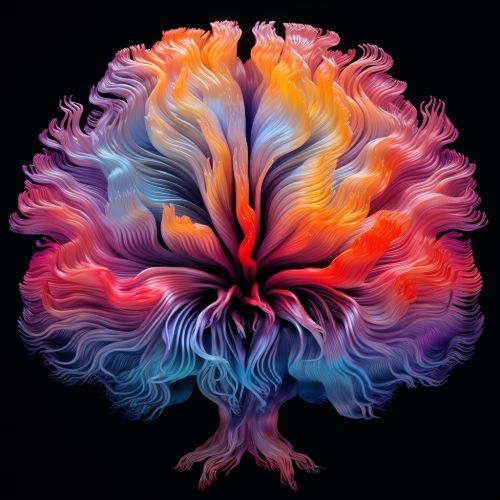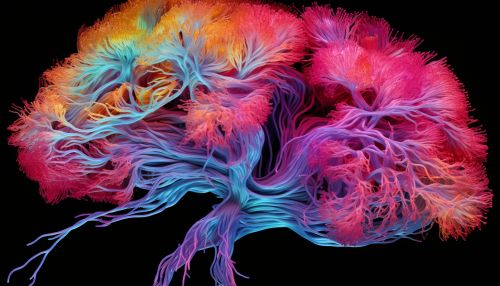Diffusion MRI
Introduction
Diffusion MRI, or dMRI, is a specialized form of MRI that leverages the random Brownian motion of water molecules within a tissue to generate contrast in MR images. Unlike conventional MRI, dMRI allows the imaging of the microstructural characteristics of tissues, especially the white matter of the brain.


Principles of Diffusion MRI
The principles of dMRI are rooted in the phenomenon of diffusion, which refers to the random motion of particles in a medium due to thermal energy. In biological tissues, the diffusion of water molecules is not completely random, but is influenced by various factors such as cellular structures, membranes, and macromolecules. This anisotropic (direction-dependent) diffusion can be measured using dMRI, providing valuable information about the microstructure of the tissue.
Diffusion and Brownian Motion
The concept of diffusion is closely related to Brownian motion, a term used to describe the random motion of particles in a fluid as they collide with other particles. This random motion is the result of thermal energy, and it is this energy that dMRI measures to create images.
Diffusion Weighting
In dMRI, diffusion weighting is achieved by applying a pair of strong magnetic field gradients on either side of the radiofrequency pulse. This causes the spins of water molecules moving along the direction of the gradient to dephase, resulting in a signal loss that is proportional to the degree of diffusion.
Anisotropic Diffusion
In many tissues, especially neural tissues, the diffusion of water is not isotropic (equal in all directions), but anisotropic. This is due to the presence of barriers such as cell membranes and myelin sheaths that restrict the motion of water molecules. By measuring this anisotropic diffusion, dMRI can provide insights into the orientation and integrity of white matter tracts.
Techniques in Diffusion MRI
There are several techniques in dMRI that are used to measure and visualize the diffusion of water molecules in tissues. These include diffusion tensor imaging (DTI), high angular resolution diffusion imaging (HARDI), and diffusion kurtosis imaging (DKI).
Diffusion Tensor Imaging
DTI is the most commonly used technique in dMRI. It models the diffusion of water as a 3D Gaussian distribution, which can be represented by a mathematical construct known as a tensor. From the diffusion tensor, various parameters can be derived, such as the mean diffusivity (MD), fractional anisotropy (FA), and the principal diffusion directions.
High Angular Resolution Diffusion Imaging
HARDI is a technique that goes beyond DTI by providing a more accurate representation of complex fiber architectures. It does this by sampling the diffusion signal at a high number of gradient directions, allowing the reconstruction of the orientation distribution function (ODF).
Diffusion Kurtosis Imaging
DKI is a technique that measures the non-Gaussian diffusion of water, which is often observed in complex tissues. By measuring the kurtosis of the diffusion distribution, DKI provides additional information about the microstructural complexity of the tissue.
Applications of Diffusion MRI
dMRI has a wide range of applications in both clinical and research settings. It is particularly useful in the study of the brain, where it can provide insights into the white matter architecture, the integrity of neural pathways, and the changes associated with various neurological conditions.
Neurological Disorders
dMRI is widely used in the study of neurological disorders such as multiple sclerosis, Alzheimer's disease, and stroke. By providing information about the integrity of white matter tracts, dMRI can help in the diagnosis and monitoring of these conditions.
Brain Connectivity
One of the major applications of dMRI is in the study of brain connectivity. By tracing the principal diffusion directions, dMRI can reconstruct the major white matter tracts of the brain, a technique known as tractography. This has been used to study the connectome, the complex network of connections in the brain.
Tumor Imaging
dMRI is also used in the imaging of tumors, particularly brain tumors. By measuring the diffusion of water, dMRI can provide information about the cellular density of the tumor, which can be useful in the grading of tumors and in the assessment of treatment response.
